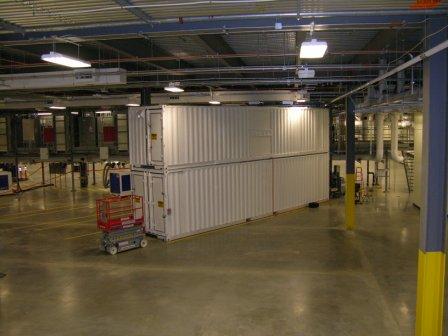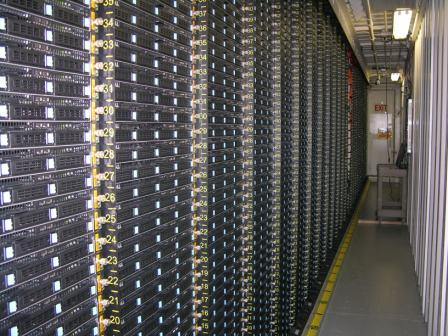Microsoft Celebrates Chicago Data Center Grand Opening
Containers Increase IT Efficiency of Microsoft’s Cloud Computing Infrastructure
Microsoft’s cloud computing infrastructure takes another big step forward this week with the grand opening of our Chicago data center. At more than 700,000 square feet, this facility significantly expands our ability to meet the demand generated from our Live, Online, and Cloud Computing services offerings for our customers. Combined with the grand opening of our Dublin, Ireland, data center last week to expand our capacity and network throughout EMEA, the opening in Chicago demonstrates how Microsoft is expanding capacity around the world to support its online businesses and customers.
Investing in turbulent economic times is always a tough choice – one that Microsoft is clearly making by investing in technology and innovation in a thoughtful and measured manner with an eye towards long-term growth for our customers, our shareholders, and our business. Microsoft’s data centers represent the infrastructure foundation of the company’s cloud services offerings and demonstrate how Microsoft is positioning itself to compete and succeed with an approach we call Software plus Services. Microsoft’s Software plus Services strategy is designed to create computing experiences that offer both the best of client technology and the best of the Web to connect people, data, devices, and applications.
One of many reasons we decided to hold a grand opening of the Chicago facility is to share our best practices. While in one sense our best practices are competitive advantages for Microsoft, we hope they will also help others in the industry make the cloud a safer and more reliable place that companies can trust for their operations. Very few companies can make the infrastructure investment that Microsoft has, so we think it is important to share what we’ve learned with the industry.
The first phase of the Chicago data center represents 30 megawatts of critical power. An additional 30 megawatts is pre-positioned for future growth. This incremental approach means customers today will enjoy top-notch performance and availability while we control costs for Microsoft and its shareholders.
One aspect of this data center that I’d like to talk about in some detail here involves our continued focus on environmental best practices.
Through the use of pre-manufactured, standard shipping containers, each of which house approximately 1,800 to 2,500 servers (as we’ve noted in previous blogs), we are able to realize greater conservation of energy and deliver new advancements in power efficiency. In addition, the isolated nature of containers enables Microsoft and its vendors to research new approaches around power and cooling alternatives to reduce energy consumption even more in the future.
Inside view of a container in the Chicago data center.
The Chicago facility is one of the largest data centers in the world to use containers. The entire first floor is devoted to parking stalls for containers, which will eventually house more than two-thirds of all the servers in the data center. The containers plug into standard interfaces called “CBlox” that we have developed with our partners. This interface provides a kind of “plug and play” for data center containers (for those of you who have been around long enough to remember when Microsoft developed “Plug and Play” for Windows).

See the video of containers being installed in the new Chicago facility.
Containers provide further environmental benefits in that they don’t require additional packaging materials or external form factors for the thousands of servers that they house. They also require less cabling and other equipment that all add up to unnecessary waste in traditional data center designs. Containers are also a very efficient way to quickly deploy capacity.
Another best practice we are using in Chicago is water-side economization, which enables us to cool the facility without requiring the high levels of electricity typically needed to power large chillers. Environmental sustainability is in Microsoft’s DNA and the Chicago data center serves as a great example.
I’d also like to talk about the incredible quality and amount of work that went into this data center, as well as the investments Microsoft has made in the local community throughout this project. Building this state-of-the-art facility generated approximately 3,000 construction-related jobs with a peak workforce of around 1,100 workers. More than 1.5 million man-hours of labor went into the project, and the total investment in the facility will top $500 million over time.
This week’s grand opening provides us the opportunity to thank those who helped turn our vision for the Chicago data center into reality. The facility actually began operations on July 20, delivering online services to our customers. It is gratifying to reflect on this achievement as we plan our next advances to move data center sustainability and efficiency forward for Microsoft, our customers, and the industry.
Arne
Arne Josefsberg,
General Manager of Infrastructure Services
Global Foundation Services
Microsoft
